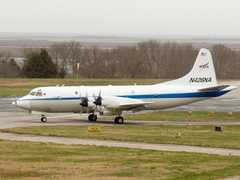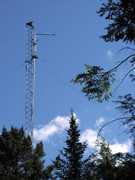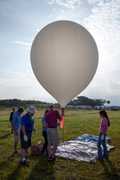Wakasa Bay Experiment
Global Water & Energy Cycle, Weather
- 1
- view all deployment datesDeployment
2003-01-14 2003-02-03 - 4
- Platforms
- 0
- Data Products
The Campaign
The Wakasa Bay Experiment was a joint effort between Japan and the United States. The main goal was to verify precipitation retrievals from the Advanced Microwave Scanning Radiometer for EOS (AMSR-E), especially at high altitudes. The experiment involved a single deployment during the boreal winter of 2003 across Wakasa Bay, Japan. The NASA P-3 aircraft was equipped with remote sensors like the Airborne Multi-channel Microwave Radiometer (AMMR), Millimeter-wave Imaging Radiometer, and Airborne Second Generation Precipitation Radar (APR-2) to collect precipitation data over the Western Pacific Ocean and the Sea of Japan for satellite validation. The Japanese Gulfstream II aircraft, participating in the Winter Mesoscale Convective Systems Observations over the Sea of Japan in 2003 (WMO-03) field campaign, gathered cloud physics and precipitation measurements. Ground-based observations of precipitation were made using radars, radiometers, gauges, and other sensors to validate retrievals over land.
N: 42°N
S: 30°N
W: 134°E
E: 151°E
no campaign DOI available
- Overview of the Wakasa Bay Experiment
Additional Notes

P-3 Orion

Campaign Permanent Land Sites

Campaign Balloons
Gulfstream II